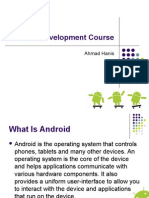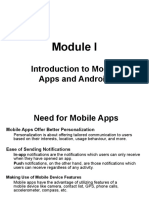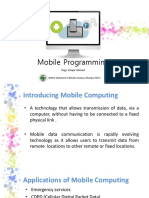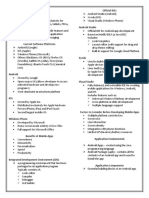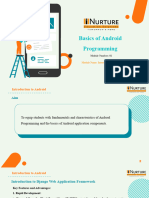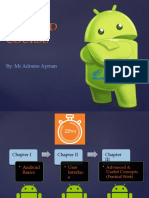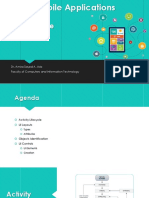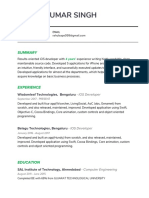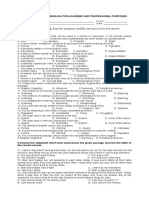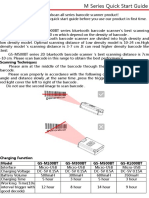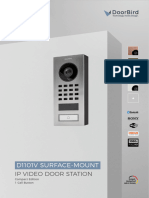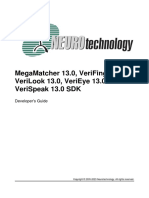0% found this document useful (0 votes)
101 views32 pagesIntroduction to Mobile App Development
This document provides an overview of a lecture on mobile application development. It discusses the course objectives to focus on mobile device strengths and limitations, concepts, and creating mobile applications. The course plan covers topics like Android vs iOS, development environments, activities, menus, intents, lifecycles and more. Student evaluation includes coursework, a midterm, and final exam. It also introduces mobile hardware, operating systems like iOS and Android, and how Android apps work with virtual machines, programming languages and the app development process.
Uploaded by
Omar MagdyCopyright
© © All Rights Reserved
We take content rights seriously. If you suspect this is your content, claim it here.
Available Formats
Download as PDF, TXT or read online on Scribd
0% found this document useful (0 votes)
101 views32 pagesIntroduction to Mobile App Development
This document provides an overview of a lecture on mobile application development. It discusses the course objectives to focus on mobile device strengths and limitations, concepts, and creating mobile applications. The course plan covers topics like Android vs iOS, development environments, activities, menus, intents, lifecycles and more. Student evaluation includes coursework, a midterm, and final exam. It also introduces mobile hardware, operating systems like iOS and Android, and how Android apps work with virtual machines, programming languages and the app development process.
Uploaded by
Omar MagdyCopyright
© © All Rights Reserved
We take content rights seriously. If you suspect this is your content, claim it here.
Available Formats
Download as PDF, TXT or read online on Scribd
/ 32
















